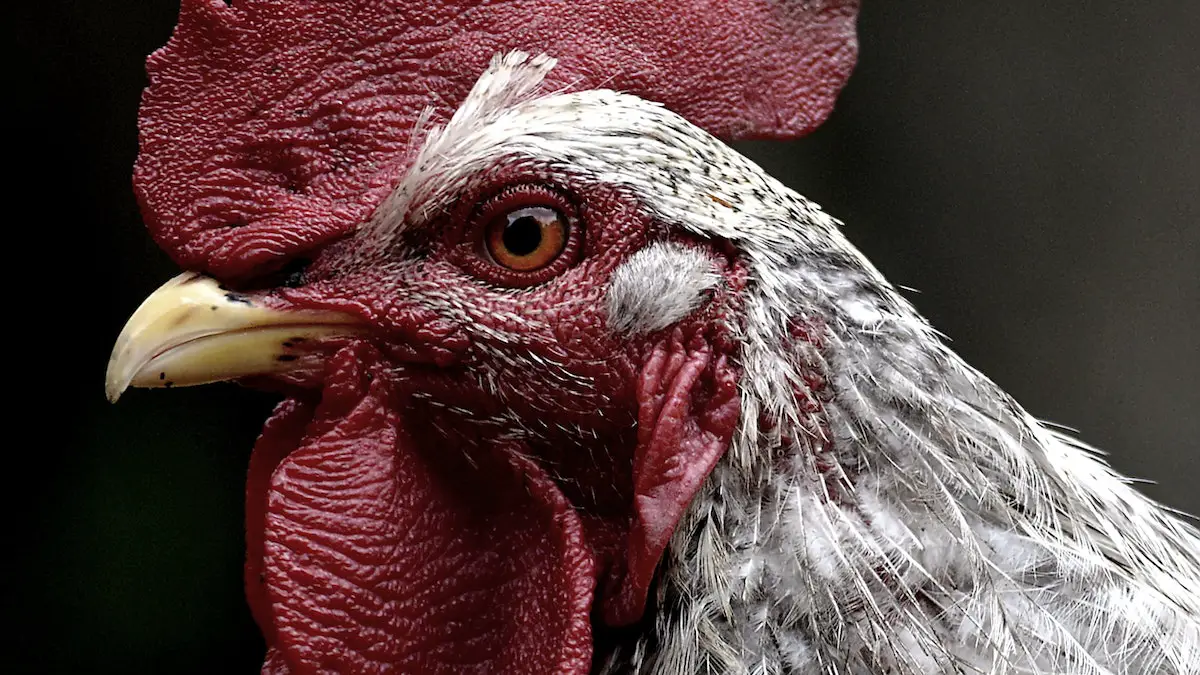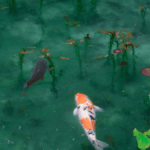Some links on this page may contain affiliate links which means that, if you choose to make a purchase using the link, Agricfy.com may earn a small commission at no extra cost to you. For more information, go to our Affiliate Disclosure Page!
Are you hearing mysterious clucks and squawks from your coop? Do you think your flock’s discomfort may be caused by cunning chicken lice? Don’t fret!
Our in-depth article is your go-to resource for unraveling the mystery of these tiny terrors.
In this article, you’ll learn the simple ways to accurately identify chicken lice and obtain professional insights into the most efficient cures.
From natural remedies to tried-and-true solutions, we’ve got you covered, ensuring your feathered friends enjoy a pest-free paradise.
So pay attention as we explore the world of chicken lice and provide you with the knowledge you need to safeguard your priceless fowl.
Overview: Chicken Lice Explained
The tiny, wingless insects known as chicken lice, or Menacanthus stramineus, are members of the Phthiraptera order. Ectoparasites by nature, these organisms have developed into experts at infecting avian hosts, with chickens being the target in our case.
Three separate stages make up the life cycle of chicken lice: the egg (sometimes called a nit), the nymph, and the fully-grown adult.
The host specificity of chicken lice is remarkable because they are parasites that are so precisely adapted to their bird hosts that they are dependent only on those hosts to survive.
Lice commonly have an extended abdomen. A louse will spend the entirety of its life cycle on an unknowing chicken, typically under the feathers and close to the vent.
These kinds of crevices are exactly what lice adore because they like a warm atmosphere.
Furthermore, they are easily transmitted from chicken to chicken, making it risky to add any new chickens to an existing flock if they are not isolated and watched closely before meeting their new feathered friends.
A chicken that has a large number of lice feeding on it is at risk of becoming anemic owing to blood loss when a lice infestation gets out of hand. Lice reproduce quickly.
A chicken with anemia has a compromised immune system and is more susceptible to catching various infections and illnesses. If the illness is left untreated, it frequently results in death.
Types of Chicken Lice
The various kinds of chicken lice and their characteristics are listed below.
1. Shaft Lice
The base of the feather shafts is the primary habitat of the common variety of chicken louse known as shaft lice.
The flattened body form and often the dark color of these lice make them fairly simple to spot.
As they feed on feather fragments, skin scales, and sometimes blood, shaft lice infestations frequently cause damage to feathers.
Characteristics:
Body Shape: Flattened body shape that makes it easy for them to move through feathers.
Habitat: They live at the base of feather shafts and devour blood and organic waste there.
Feeding Behavior: Shaft lice feed on the feather fragments, skin scales, and blood of the host bird.
Impact: Damage to a bird’s feathers can reduce insulation, which impairs the bird’s capacity to control body temperature.
2. Wing Lice
The distinctive predilection of wing lice for chicken wing feathers makes them unique.
In comparison to other varieties, these lice are often yellowish-brown in color and have a thinner body shape.
The effects of wing lice infestations can include feather loss, skin rashes, and even a reduction in egg production.
Characteristics:
Body Form: Narrow and elongated; designed for attachment to wing feathers.
Habitat: Wing feathers, usually close to the feather quills.
Feeding Habits: Wing lice consume blood, skin fragments, and feather dust.
Effect: A bird with weak insulation may be more vulnerable to environmental stress. Feather loss might cause this.
3. Body Lice
The vent, head, and neck parts of a chicken are just a few places where body lice can be found. They are distinguished by their bigger size and pale appearance.
These lice distress the host bird and may have negative effects on its health since they feed on blood and skin scales.
Characteristics:
Body Type: Compared to other lice, it is larger and thicker, and its coloring is paler.
Habitat: Skin on the ventral, cranium, and neck areas.
Feeding Habits: Body lice consume the host bird’s blood as well as skin scales.
Impact: Serious infestations may cause anemia, impaired weight gain, and deteriorated general health.
4. Head Lice
The narrow head and diminutive size of head lice make them well-suited for living in the host bird’s head and neck.
These lice feed on blood, and infestations can make chickens uncomfortable, agitated, and inclined to scratch at their feathers.
Characteristics:
Body Type: Small and slender, designed specifically to infest the head and neck areas.
Habitat: The head and neck regions of the bird.
Feeding Habits: Head lice consume the blood of their host bird.
Effect: Infestations can cause stress, discomfort, and behavioral changes in hens.
5. Tail Lice
Another prevalent variety of chicken lice is the tail louse, which feeds on the feathers of the host bird’s tail and vent.
Their bodies are usually flat and oval in shape and often appear grayish. Heavy infestations may cause the chickens stress, irritated skin, and damage to their feathers.
Characteristics:
Body Form: Flat and oval in shape, with an adaptation for living on tail and vent feathers.
Habitat: The feathers on the tail and vent.
Feeding Habits: Tail lice consume blood, skin fragments, and feather dust.
Effect: Skin rashes and feather damage might impair one’s health and well-being.
Prevention and Management
For efficient prevention and control, it is crucial to comprehend the traits and behaviors of several forms of chicken lice. Poultry farmers can put the following measures into practice to lessen the risks caused by these parasites:
Regular Inspection: Conduct routine examinations of your flock to spot early indications of a lice infestation, including as feather damage, restlessness, and behavioral changes.
Hygiene Practices: Maintain a clean and dry coop environment by routinely changing the bedding, offering dust baths, and cleaning the perches.
Lice infestations are avoided by good cleanliness.
Quarantine New Birds: To prevent the potential spread of parasites like lice, quarantine new birds for a while before integrating them into your flock.
Natural Remedies: The charm of natural treatments lies in their subtle yet powerful action. A mineral-rich powder known as diatomaceous earth breaks down the lice’s protective walls, causing them to become dehydrated and eventually die.
Herbal sprays with strong essential oils create an olfactory fortress that keeps lice away.
Imagine creating and using these homemade remedies to turn your chicken coop into an environment that is unfriendly to lice.
Chemical treatments: In extreme infestation situations, chemical treatments can deal the invaders a quick blow.
Products with pyrethrin as an ingredient target the nerve systems of lice, paralyzing and eventually killing them.
To prevent injury to your chickens and the environment, you must exercise extreme caution and carefully follow all directions.
Consider the meticulous technique required to deliver chemical treatments, which is comparable to a surgeon carrying out a delicate operation.
Life Cycle of Chicken Lice
There are various stages in the chicken louse life cycle. Let’s carefully examine each step.
Stage 1: The Egg-Laying Phase
Consider the possibility that female chicken lice act as masterminds, secretly depositing oval-shaped eggs, or nits, at the base of our beloved birds’ feathers.
This clever tactic protects the eggs from the harsh surroundings and the birds’ grooming practices. The real surprise is that these eggs aren’t just stuck there for show.
To firmly adhere them to the feathers, females utilize a special glue. And let me tell you, these women are champion egg-layers, depositing numerous eggs each day and initiating those infestations.
Stage 2: Hatching Stage
After the egg-laying display, the incubation process, which lasts 4 to 8 days, begins. In the eggshells, those tiny lice-in-waiting grow to adulthood, similar to the birthing process.
When they eventually split apart, the lice nymphs—tiny replicas of the adults—come out. Although they may have an adult appearance, these little fellas are smaller and paler.
They must go through around six molts, losing their skin each time so they may grow larger. Guess what, too? They consume the host bird’s blood as snacks, obtaining all the nutrients they require to develop into adult birds.
Stage 3: The Stage of Maturation
We’ve got several adult lice now that the molts have passed. These enormous shots are fully developed and prepared for a party.
They possess these incredibly cool mouthpieces, which are essentially made for piercing the host bird’s skin and sucking its blood.
Furthermore, these louse scurry about, investigating your chick’s feathers and seeking for the ideal locations to eat and congregate.
Stage 4: The Mating Period
The most is mating, of course! Male lice are looking for females to romance, thus they’re on a quest. When they finally locate each other, like in a treasure hunt, sparks start to fly.
It’s like the beginning of the next generation when a pair of birds mate directly on the host bird’s body.
Once the deed is through, the female gets to work by laying eggs and ensuring that the cycle will continue.
Stage 5: Egg-Laying Phase
After mating, the fun continues. Oh no! The beginning of the egg-laying phase solidifies the cycle’s development.
Females meticulously attach eggs to feathers like architects, and you know what happens next? It’s time for incubation when the eggs cozily prepare for the spectacular arrival of the new generation.
Causes of Chicken Lice
Simply by being in their surroundings, chickens naturally get lice. They can also get them from wild birds.
A flock can easily become infected, and when it does, it often does so fast. The likelihood of a chicken contracting lice is significantly increased if poor living conditions are maintained for them.
A small, filthy coop, for instance, is ideal for lice to thrive and survive on several hens.
Lice may easily move from chicken to chicken since chickens love to roost together. It is safe to assume that everyone in the flock has to be watched over and treated if one chicken is infected.
Because the cycle has not been stopped, leaving one or two untreated is typically a bad idea.
Symptoms of an Infestation
Since lice are generally simple to identify, any infestation can be stopped before it gets out of hand with proper monitoring.
Good signs that a flock could be having a little trouble include the symptoms listed below:
Fatigue: Infested chickens may not be acting like their usual vivacious selves. If they appear withdrawn and lethargic, they might be carrying some unwelcome baggage.
An infestation can be detected by irregular patches of reddish-dark pink color and chewed-looking wings.
Pale combs and wattles: A chicken’s once-beautiful brilliant red combs and wattles frequently turn a pale pink tone when it gets anemic.
They may have a lice infestation if they exhibit this behavior.
Dirty vent: Every hen occasionally gets a little dirt on its bottom, but if closer inspection reveals that there are small dirt specks all around the vent, it may not just be a bad day in the nesting box.
Drooping wings: When they’re feeling unwell, chickens will let their wings droop. They frequently do this on warm days to enable the air to flow around their body, but if they do it every day, it’s likely that their health isn’t that great. We should look more closely now.
Itches: Lice itch! If chickens have lice, they will scratch much more frequently than usual.
The fact that dust calms itchiness and suffocates lice may also be contributing to their increased use of dust baths. We may call it self-medicating.
Decline in Egg Production: A hen may experience a decline in egg production for a variety of causes, but occasionally, lice may be to blame.
Visible lice: Some varieties of lice can grow up to 1/4″ in size, while others are incredibly tiny. They are easier to see with the unaided eye as they grow larger.
Lice Eggs on Shafts: When a chicken’s feather shafts are examined more closely, little eggs will be clumped together around the bottom of the feather, resembling a pile of whitish mud. Lice enjoy laying their eggs here.
When To Take Action Against Chicken Lice
Successful lice management depends on knowing when to step in. The right timing can stop minor problems from escalating into full-blown crises.
Introducing new flock members necessitates a cautious approach in terms of quarantine and biosecurity.
Quarantine and Biosecurity: Quarantine prevents prospective carriers from spreading lice to your established flock while allowing for observation and health evaluation.
Imagine a well-run isolation facility, a safe sanctuary where visitors are vetted before being allowed to join the flock in its entirety.
Regular Health Checks: Scheduled health examinations are comparable to regular medical appointments. Regular checks of feathers, skin, and behavior act as a lice early warning system.
Imagine yourself adopting the role of a watchful caregiver, performing careful health evaluations, and making sure your flock is in good health.
How To Treat Chicken Lice
To avoid a catastrophic outbreak, a flock should be treated for lice as soon as there are any signs of lice residing there.
Since treating lice requires a lot of work, doing it correctly the first time makes the task far less uncomfortable. In most early occurrences of an infestation, the following actions will be effective:
Move the chickens out of their coop: Taking the hens out of the coop is the first step in the healing process. Although lice prefer to live on chickens, they also hang out nearby when they are not being fed.
To regain control from the invaders, remove the chickens first.
Treat: Dust all of the chickens with food-grade diatomaceous earth as a treatment. This is a natural method for treating and avoiding chicken pox and other health problems.
It’s quite great and a need for poultry owners. To do this, combine 12 cups of DE (diatomaceous earth) with a 50lb bag of play sand that can be purchased at a standard hardware shop.
For your chickens, this is the ideal dust bath.
Feed iron: Feed your chickens with iron is particularly important as infected hens’ anemia has probably caused them to lose a lot of red blood cells.
To restore what they have lost, iron is a fantastic solution.
An afflicted flock will go crazy for iron-rich foods like pumpkin seeds, peas, and spinach.
Feed protein: Protein will provide a weak flock with the energy they need to begin the healing process when fed.
Even if it sounds unusual, scrambled eggs are a great way to give you a rapid energy boost. Hey, it works on people!
Clean coop: This is of paramount importance. Reintroducing pest-free hens to an infested coop will restart the whole cycle.
Prior to reintroducing the now-healthy hens and roosters, the coop must be properly cleaned, the bedding burned, and the corners scrubbed.
Dust again: Dust the hens once more: Since the lice are likely to have deposited eggs, a second dusting is necessary to ensure that any freshly hatched eggs are destroyed along with the adult lice.
The chickens can perform this a few more times over the course of the ensuing months just to be safe.
Another way to stop new infestations is to offer diatomaceous earth as a dust bathing alternative.
You can apply an insecticide containing pyrethrin if your flock is severely infested. It is available as spray solutions or powder/dust.
Unless the flock is in danger of collapsing, I strongly oppose insecticide-based treatments.
Conclusion
It is necessary to take a holistic approach to treating and preventing chicken lice, which includes good coop management, natural cures, and, if necessary, chemical treatments.
You can protect your chickens’ health and give them a cozy and prosperous habitat by becoming familiar with the indications of an infestation, comprehending the lice lifecycle, and putting thorough prevention measures into practice.
I hope you found this guide helpful. Please, share your thoughts with us by filling out the “Leave A Reply” form found below.







